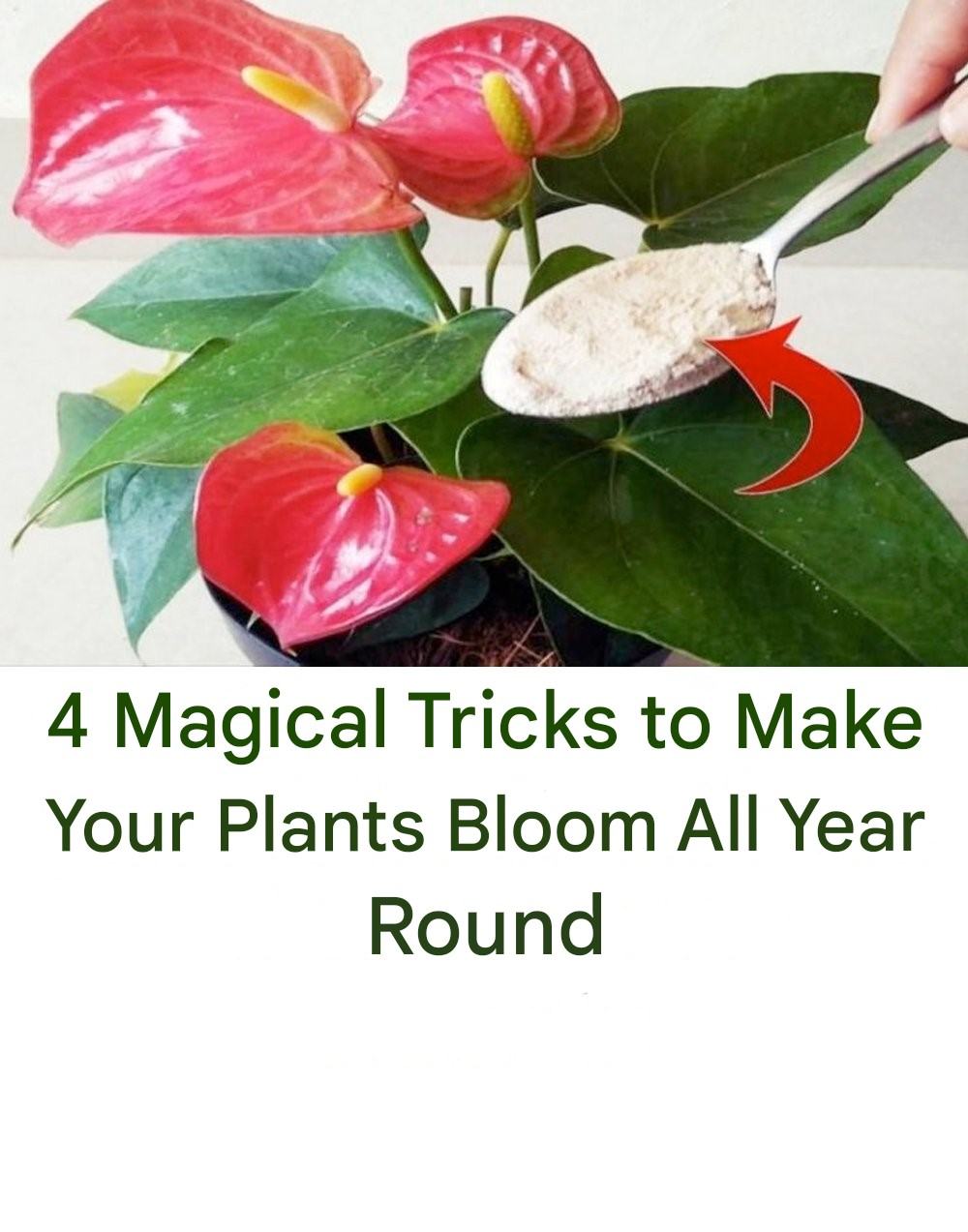A garden full of colorful, blooming flowers is every plant lover’s dream. However, many plants have natural dormancy cycles, making it challenging to maintain continuous blooms throughout the year. The good news? With the right techniques, you can encourage your plants to bloom more often and for longer periods.
Here are four proven tricks that will help you enjoy vibrant flowers all year long, no matter the season.
1. Use Organic Fertilizers to Boost Flower Production
Healthy, well-fed plants produce more flowers. Providing the right nutrients at the right time encourages faster growth and abundant blooms. Instead of relying on chemical fertilizers, organic fertilizers nourish the soil naturally, ensuring sustained flowering.
Best Organic Fertilizers for Year-Round Blooms
- Banana Peels: Rich in potassium, banana peels help plants develop strong stems and promote flower production. Chop up banana peels and bury them around the roots for a slow-release nutrient boost.
- Used Tea Leaves: Plants love the nitrogen found in tea leaves, making them a fantastic organic fertilizer. After brewing tea, sprinkle the cooled, dried leaves into the soil to help roses and flowering shrubs thrive.
- Eggshells: Crushed eggshells add calcium to the soil, helping plants develop healthy roots. Stronger roots lead to more frequent and longer-lasting blooms.
- Compost: Regularly adding kitchen scraps and yard waste to your compost pile enriches the soil with essential nutrients, keeping your plants healthy and productive year-round.
How Often Should You Fertilize?
Feed flowering plants every 2–4 weeks during their active growing season. In winter, reduce feeding for dormant plants, but continue for those that bloom in colder months.
2. Deadhead Spent Blooms to Encourage Continuous Flowering
Deadheading is the process of removing old or dying flowers to make way for new blooms. Many plants naturally stop flowering once their flowers begin to set seed. By cutting off these fading blooms, you trick the plant into producing more flowers instead of seeds.
How to Deadhead Flowers Correctly
- Use sharp scissors or pruning shears to snip off dead or wilting flowers just above the nearest healthy leaf or bud.
- For plants with multiple blooms on a single stem (like roses), cut just above the first five-leaflet to encourage more branching and flowering.
- For continuous bloomers like marigolds, geraniums, and petunias, deadhead weekly to keep them producing new flowers.
Deadheading not only extends the flowering period but also keeps your garden looking neat and healthy.
3. Provide the Right Amount of Sunlight for Maximum Blooms
Sunlight is one of the most crucial factors for consistent flowering. Most blooming plants need at least 6–8 hours of direct sunlight per day to produce flowers. Without adequate light, plants become weak and produce fewer or no blooms.
How to Ensure Your Plants Get Enough Sunlight
- Outdoor plants: Position them in a south-facing location to maximize sun exposure.
- Indoor flowering plants: Place them near a bright window that receives plenty of natural light, preferably east or south-facing windows.
- Low-light environments: If you don’t have enough natural sunlight, consider using grow lights to supplement light for indoor flowering plants like African violets and orchids.
Signs Your Plant Needs More Light
- Leaves turn pale or yellow.
- Stems grow long and leggy without producing flowers.
- Flowers are smaller than usual or don’t bloom at all.
If you notice these signs, try moving the plant to a brighter spot or adjust your artificial lighting setup.
4. Control Temperature and Humidity for Optimal Blooming
Many plants struggle to bloom when temperatures or humidity levels are not ideal. Sudden temperature changes can stress plants, causing buds to drop before they even open.
Ideal Temperature Ranges for Flowering Plants
- Warm-weather plants (e.g., hibiscus, bougainvillea, petunias): Prefer temperatures between 65–85°F (18–29°C).
- Cool-season bloomers (e.g., pansies, snapdragons, camellias): Thrive in cooler temperatures around 45–65°F (7–18°C).
How to Maintain Proper Temperature and Humidity
- Keep indoor plants away from air conditioners or heaters, as extreme temperatures can cause stress.
- Use a humidity tray (a shallow tray filled with water and pebbles) to maintain moisture levels for indoor plants.
- Misting leaves occasionally can help tropical plants like orchids and anthuriums thrive.
- For outdoor gardens, use mulch to regulate soil temperature and retain moisture.
Bonus Tips for More Blooms Year-Round
Choose the Right Plants
If you want flowers all year, mix plants with different blooming cycles. Some plants bloom in spring and summer, while others thrive in fall and winter.
Water Wisely
Overwatering can lead to root rot, while under-watering causes stress and fewer flowers. Water only when the soil is dry about an inch below the surface.
Prune Regularly
Light pruning stimulates new growth and encourages more flowers. Avoid heavy pruning right before flowering season, as this may reduce blooms.
Final Thoughts: Keep Your Plants Blooming All Year
Getting plants to bloom year-round requires the right care, nutrients, and environment. By using organic fertilizers, deadheading spent flowers, ensuring proper sunlight, and maintaining ideal temperature and humidity levels, you can extend the blooming season and enjoy vibrant flowers every month of the year.
With these four magical tricks, your garden or indoor plants will reward you with continuous, breathtaking blooms—no matter the season!

